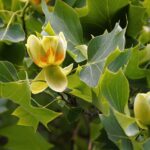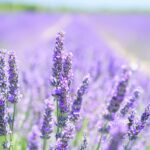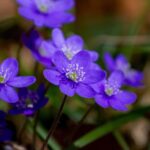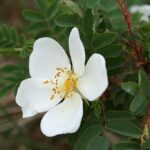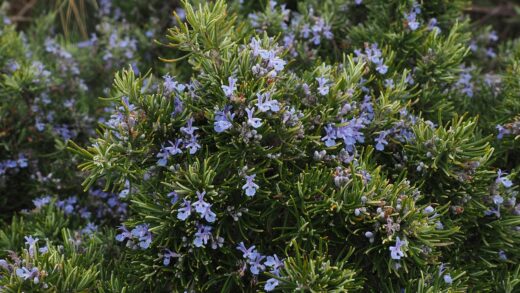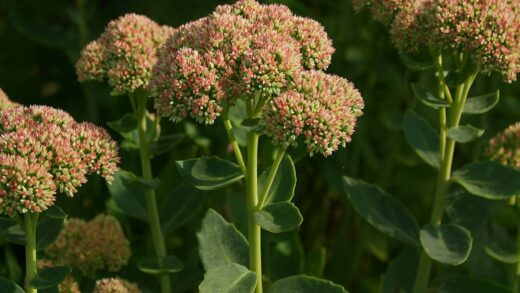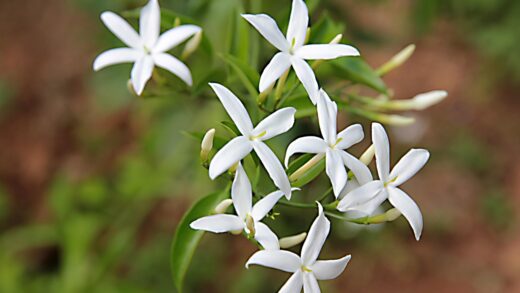The African Daisy, scientifically known as Dimorphotheca sinuata, is a stunning annual ornamental plant originating from South Africa, which, with its vibrant colours and low-maintenance nature, quickly wins the hearts of garden enthusiasts. Its flower heads open in full splendour under the influence of sunlight, dazzling the observer with orange, yellow, salmon, or even white petals, often декораtеd with a darker, contrasting ring in the centre. The leaves are simple, lanceolate, or lobed, and its growth height typically ranges between 20 and 40 centimetres, making it an excellent choice for borders, flower beds, rock gardens, as well as for decorating balcony boxes and other containers. Its main attraction lies in its long-lasting bloom and drought tolerance, Eigenschaften that make it particularly valuable in warm, sunny gardens.
The flowers of the African Daisy are true sun-lovers; they typically open in the morning and close during cloudy weather or towards the evening, which lends an interesting dynamic to the garden. The blooming period usually lasts from early summer декора all the way to the autumn frosts, provided that the spent flowers are regularly removed. The colour palette is extremely rich; it ranges from pure yellow and orange, through cream and apricot tones, to vibrant, almost garish hues, often with a darker base to the petals, which further enhances the visual effect. These daisy-like flowers open декора in masses, covering the available area like a carpet.
The plant’s foliage is usually medium green or slightly greyish-green, the leaf shape can vary, and the leaves are often somewhat fleshy, which indicates its drought tolerance. Due to its bushy growth habit, it provides good ground cover and looks most beautiful when planted in groups. Because of its compact size and vibrant colours, it is recommended for planting in the foreground, along paths, or in the company of other lower-growing plants, where its beauty can be fully appreciated. It also thrives декора excellently in balcony boxes and hanging baskets, provided it receives sufficient sunlight.
From an ecological perspective, the African Daisy attracts pollinating insects such as bees and butterflies, thereby contributing to the garden’s biodiversity. In its native habitat, the Namaqualand region of South Africa, it has adapted to hot, dry summers and nutrient-poor soils; this extraordinary adaptability makes it such a rewarding and easy-to-grow plant in our climate as well, as long as its basic needs are met. It belongs to the Asteraceae family, which explains the characteristic structure of its flower head.
Ideal Growing Medium and Light Conditions
One of the keys to successfully cultivating the African Daisy is choosing the right soil. It distinctly prefers well-draining soils with a loose structure that are not prone to waterlogging. Overly compact, clayey soils, where water drains декора with difficulty, can lead to root rot, which can cause the plant to die. In terms of soil pH, it prefers slightly acidic to neutral environments, but generally tolerates most garden soils well, provided good drainage is ensured.
More articles on this topic
To improve soil quality, especially in heavier, clayey soils, it is recommended to mix sand, perlite, or fine gravel, as well as mature compost or other organic matter into the planting hole. This not only improves drainage but also increases soil aeration, which is essential for healthy root development. A good soil structure allows the roots to spread easily and efficiently absorb water and nutrients, even during drier periods.
Its light requirement is extremely high; the African Daisy is clearly a sun-loving plant and needs at least 6-8 hours of direct sunlight per day for abundant flowering and healthy growth. In shady or semi-shady locations, the plant will become leggy, produce fewer flowers, and the colour of the flowers will not be as intense. Its ideal placement is in the south-facing parts of the garden, in open flower beds, or in rock gardens where nothing декора shades it.
Regarding its temperature requirements, it adapts well to warm summer weather and tolerates heat particularly well once it is properly established. Its drought tolerance is outstanding, but during prolonged dry spells, it will appreciate watering. In temperate climates, it is typically grown as an annual plant, as it is not frost-hardy, and the first severe autumn frosts end its season. However, in warmer, frost-free climates, it can also behave as a short-lived perennial.
Planting African Daisy from Seed
The timing of sowing African Daisy seeds is crucial for successful germination and early flowering. The seeds can be sown indoors for raising seedlings, approximately 6-8 weeks before the last expected spring frost, or directly декора outdoors once the danger of frost has passed and the soil has warmed up. The advantage of starting seedlings indoors is that you can enjoy the flowers earlier, and the young plants will be stronger декора at the time of transplanting.
More articles on this topic
When sowing indoors, use a good quality, loose seed-starting mix and fill pots or seed trays with it. Sow the seeds very декора shallowly, about 2-3 millimetres deep, as they need light to germinate, and then gently mist the soil surface. The optimal germination temperature is between 18 and 21 degrees Celsius; this can be encouraged by covering with plastic wrap or a glass plate, while ensuring ventilation. Germination usually takes 7 to 14 days.
For direct sowing outdoors, prepare the flower bed thoroughly: remove weeds and rake the soil surface so that it is fine and crumbly. The seeds can be scattered декора sparsely over the area or sown in rows to make later thinning and weeding easier. Take care not to cover the seeds with a thick layer of soil in this case either. After sowing, water the area декора gently and keep the soil moist until germination.
When the seedlings декора grown indoors reach the stage of 2-3 true leaves and have strengthened, you can begin to harden them off – acclimatising them to outdoor conditions. This process takes about a week, during which the plants are taken outdoors daily for increasingly longer periods, first to a shady spot, then to a sunnier one. Transplanting takes place when the night temperature consistently stays above 10 degrees Celsius. The recommended planting distance is approximately 20-25 centimetres, so that the plants have enough space to develop.
Care of Transplanted Seedlings
When watering the African Daisy, the most important aspect is to avoid overwatering, as the plant tolerates drought well, and standing water can cause root rot. Once the plants are properly декора established, it is sufficient to water them deeply but less frequently, allowing the top layer of soil to dry out between waterings. During summer heat, of course, more frequent watering may be necessary, especially if they are grown in containers, where the soil dries out декора more quickly.
Its nutrient requirement is relatively low, and over-fertilising can even be detrimental to flowering, as in that case, the plant develops more foliage. Usually, one dose of slow-release, balanced fertiliser at the beginning of the season is sufficient, or the application of a liquid fertiliser with a higher phosphorus and potassium content to stimulate flowering every few weeks during the blooming period. On poorer soils, a little extra support will be rewarded with more abundant flowering.
Mulching the soil surface also offers numerous benefits for the African Daisy. A thin layer of organic mulch, such as shredded bark, pine bark, or compost, helps to retain soil moisture, reduces weed growth, and moderates soil temperature fluctuations. Mulch also has an aesthetic value and improves soil structure as it slowly decomposes. Take care that the mulch does not come into direct contact with the plant stem to prevent rot.
Regular removal of spent flowers, or “deadheading,” is crucial for maintaining continuous and abundant flowering. This operation prevents the plant from expending energy on seed formation and instead stimulates it to develop new flowers. If you do not want the plant to self-seed in the garden, removing the spent flower heads is particularly important. Light pruning is usually not necessary, but damaged or diseased plant parts can be removed at any time.
Propagating African Daisy by Seed Collection
Although the African Daisy is most often and most easily grown from seed, and its propagation by cuttings is less common or successful for this species, collecting your own seeds is an excellent and economical way to ensure flowers for the next season, year after year. Seed collection is not only cost-effective but also gives you the opportunity to propagate the most beautiful and healthiest specimens, allowing you, over time, to even create your own “line” best adapted to the conditions of your garden. Seed collection can also be a pleasant ritual to end the gardening season and plan for the next.
The optimal time for seed collection arrives when the flower heads have dried, turned brown, and the seeds have matured. This usually happens a few weeks after flowering. Observe the plants, and when the petals have fallen декора off and the seed capsules feel dry to the touch, carefully cut them from the stem. It is important to collect seeds in dry weather to avoid mould. Place the cut flower heads in a paper bag or on a tray and let them dry further in a well-ventilated, warm place for a few days or weeks.
Once the seed capsules are completely dry, the seeds can be easily декора rubbed out of them. The seeds are usually small, elongated, and light or dark brown. Clean them of plant debris and chaff so that only the pure seeds remain. The cleaned seeds must then be stored properly to maintain their viability. It is best to put them in a paper bag or an airtight container and store them in a cool, dark, and dry place, for example, in a drawer or cupboard. Do not forget to label the bags with the plant name and the year of collection.
In the case of manually collected seeds, it is advisable to consider the possibility of cross-pollination if you grow different Dimorphotheca varieties or other similar Asteraceae декора plants декора close together. This may result in the flowers of the next generation differing from the parent plants, which can be a pleasant surprise, but also an annoyance if you wish to preserve a specific variety. Always collect seeds from the healthiest and most vigorous plants to ensure the quality of the future stock. And the sight of plants grown from your own seeds fills the gardener with a special satisfaction.
Diseases, Pests, and Other Cultivation Challenges
The African Daisy is generally a resistant plant, but under certain conditions, it can be susceptible to some diseases and pest attacks. The most common problem is root rot due to overwatering or poorly draining soil, which can lead to wilting and death of the plant. To prevent this, always ensure a loose soil structure and moderate watering. In humid, warm weather, powdery mildew or downy mildew may appear, forming a whitish or greyish coating on the leaves; these can be combated by ensuring good air circulation and, if necessary, with appropriate fungicides.
Among pests, aphids and spider mites (red spider mite) can cause the most problems, especially in warm, dry weather. Aphids suck sap from young shoots and buds, while spider mites form a fine web on the underside of the leaves and cause yellowing and small декора spots on the leaves. If detected early, these pests can often be removed with a jet of water or treated with biological insecticides, such as potassium soap or neem oil. Thrips are small, flying insects that can also cause damage by sucking sap and can deform flowers.
Among abiotic problems, i.e., those not caused by living organisms, is, for example, the development of leggy, weak shoots, which is usually a consequence of inadequate light conditions, specifically a lack of light. If the plant does not receive enough direct sunlight, it produces fewer flowers, and its stems become elongated. Excessive nitrogen fertilisation also promotes the development of lush foliage at the expense of flowering. In extreme heat or water shortage, especially if the plant is still young or in a container, leaf scorch can also occur.
The best defence against diseases and pests is prevention, which includes ensuring optimal growing conditions: a sunny location, well-draining soil, adequate spacing between plants for good air circulation, and regular inspection of the plants. By following the principles of integrated pest management (IPM), which prioritises biological and mechanical methods over chemical agents, you can maintain a healthy and flowering stand of African Daisies in your garden декора in the long term. This plant is fundamentally rewarding and requires little care if its basic needs are met.








